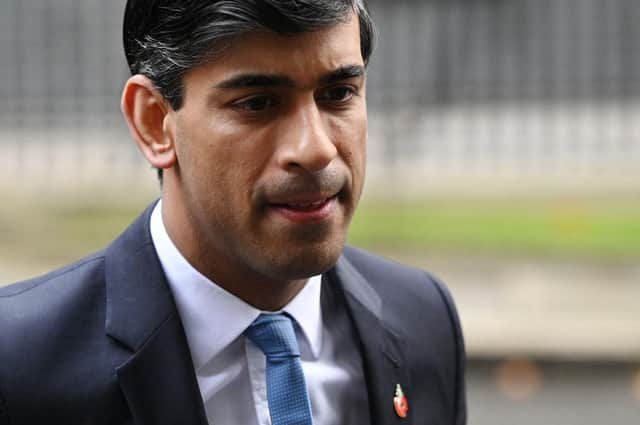UK foreign aid: how much does Britain spend on overseas aid, where does it go and why has Rishi Sunak cut the budget?


Rishi Sunak has moved to defend the government’s plan to cut its foreign aid budget by £4 billion, insisting the UK is not turning its back on the world’s poorest people.
In his spending review, the chancellor outlined to MPs a reduction in the country’s overseas aid contribution from 0.7% to 0.5% of gross national income (GNI) in 2021.
Advertisement
Hide AdAdvertisement
Hide AdMr Sunak pointed to the country’s current financial plight amid the Covid crisis and said he would raise it back up to 0.7% when the “fiscal situation allows”.
Yet the decision has caused controversy among different political parties and led to the resignation of foreign minister Baroness Liz Sugg in protest against the planned cuts.
“I don’t think anyone could characterise our level of support for the poorest countries as turning our back,” Mr Sunak told Sky News.
What is foreign aid?
Each year the government sets aside a proportion of the UK’s budget to help other countries, who are typically less economically developed.
As well as financial support, there are other ways countries can help one another through the transfer of goods such as food, military equipment or medical help.
Other types of aid could include providing books, building schools, sanitation, advising on farming methods and helping with clean water.
Sudden natural disasters such as earthquakes or tsunamis have also seen emergency aid supplied, while aid can be funded through public donations and charities like Children in Need.
How much does the UK spend on foreign aid?
Advertisement
Hide AdAdvertisement
Hide AdAs a founding member of the United Nations, the UK is committed to contributing towards foreign aid and has done so since 1974.
The UN has had a long-standing target for donor countries to contribute 0.7% of their GDP on foreign aid, which the UK reached for the first time in 2013.
David Cameron, during his time as prime minister, enshrined in UK law a necessity to maintain its 0.7% contribution. The obligation isn’t enforceable through the courts but does require an explanation to parliament if the target is not met.
The government had pledged £15 billion in overseas aid this financial year before the Covid crisis hit.
Reports in the Guardian state this figure has already been cut by £2.9 billion “due to the sharp decline in growth, but was expected to recover next year along with the projected 5.5% growth in the British economy”.
Next year’s commitment is expected to be £10 billion.
Where does foreign aid go?
The UK has helped countries such as Ethiopia, India, Bangladesh, Pakistan, Nigeria, Afghanistan, Sierra Leone, South Sudan and Syria in the past.
The money is split between multilateral organisations such as the United Nations, who fund big projects like disaster relief, and developing countries.
Pakistan (£305 million), Ethiopia (£300 million) and Afghanistan (£292 million) were the top recipients of overseas aid from the UK in 2019, according to the Daily Mail.
Advertisement
Hide AdAdvertisement
Hide AdChina received £67.9 million in UK aid which included "£851,561 on researching air pollution in cities, £278,047 on portable scanners to detect strokes and £438,795 on gastric cancer screening" the Mail report said.
A total of £107.8 million went to India, an increase of £12.8 million.
The UK's contribution in 2019 was more than double the 0.29% average given by G7 nations. None of the other G7 nations - Canada, France, Germany, Italy, Japan, and the United States - met the 0.7% target.
